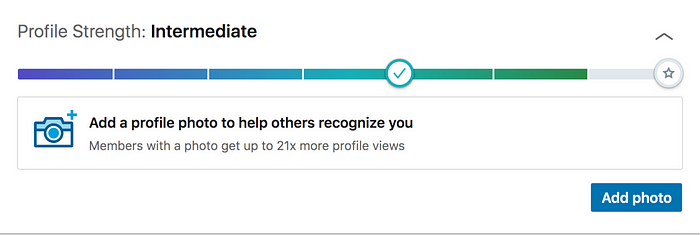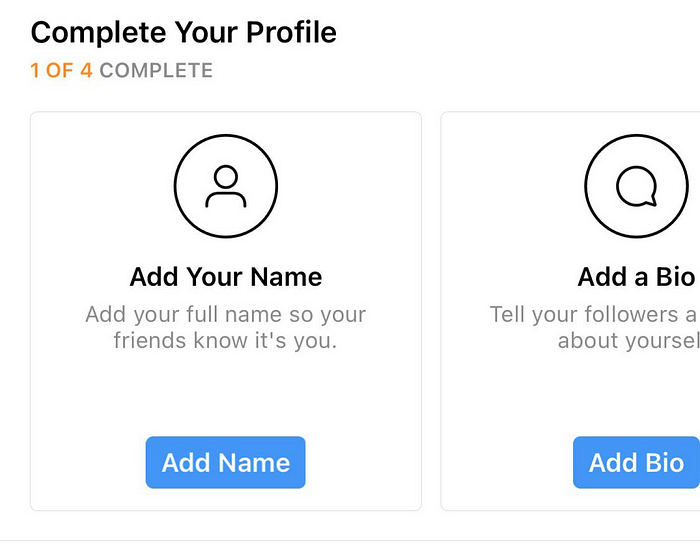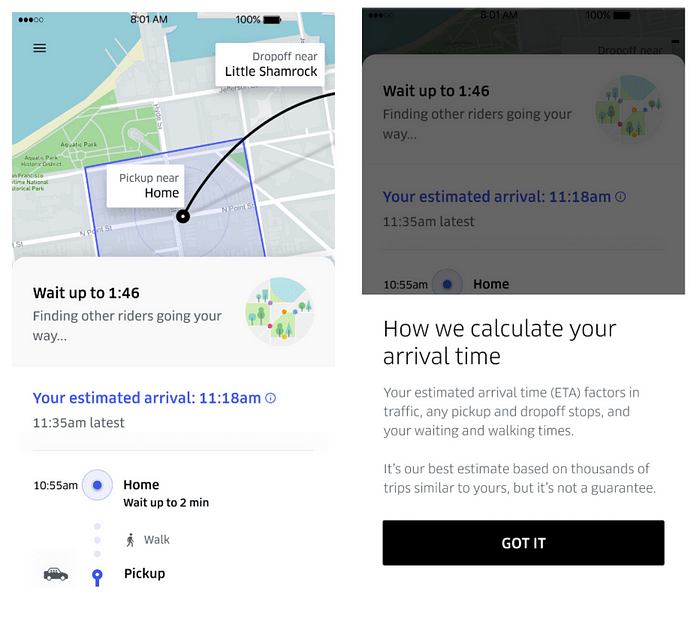

The Goal Gradient Effect — How the Psychological Hack Motivates us Towards our G...
source link: https://uxplanet.org/the-goal-gradient-effect-5f29bb5b7e0d
Go to the source link to view the article. You can view the picture content, updated content and better typesetting reading experience. If the link is broken, please click the button below to view the snapshot at that time.
The Goal Gradient Effect — How the Psychological Hack Motivates us Towards our Goal
All of us must have observed a situation in which whenever you are approaching the deadline of any exam you automatically start putting a lot of effort into preparing for it and your speed for preparation also increases i.e. your tendency to approach or complete a goal increases as you approach its deadline.
Photo by Cam Adams on Unsplash
Most motivational coaches or career counsellors always tell us to maintain a diary of the progress of our goals.
Why? What is the psychological reason behind it?
The reason is simple as soon as our mind analyzes the percentage of the progress or how close are we towards the completion of our task/goals, how close are we to approaching the deadline of any task, our mind suddenly starts to speed up the process of its completion or encourage us to complete it i.e the diary of our progress, the deadline becomes a reason/motivation to complete that task.
How easily or how soon we are going to complete a task depends upon
- The complexity or the difficulty level of the task
- How much progress already have we made toward the goal?
- The distance, and time the task will take to complete in the real world such as closing and opening a fan switch while you are at a distance from the switchboard or buying groceries in the summer afternoon.
In most cases, our interest and passion also matter in completing the task but if we want to do something out of our interest or passion then keeping the progress track or setting up a deadline for it works as a psychological trick for us and that helps us a lot in completing our task and that is known goal gradient effect.
In definition terms: The phenomenon of increasing your efforts as you progress closer to your goal is known as the goal-gradient effect.
The same principle or trick most people suggest to us for our daily life, designers also use the trick in designing an app or website as well. Think of the Goal Gradient Effect as a virtual finish line. The closer customers get to winning, the more encouraged they become.
You’ll often see the Goal Gradient Effect in UX elements like progress bars and profile completion — It is a method most companies used to encourage users to complete a complex task in small steps.
For example Linkedin progress bar for profile completion
Linkedin knows that one of its USP is professional networking and for that one of the major requirement is Linkedin profile optimization i.e. every user have to craft their profile in such a way that it’s easier for the LinkedIn algorithm to push the profile easily into a search engine and networking can be better.
But completing a profile in depth is a tedious task to even start and finish properly here is why the psychological hack of the goal gradient effect comes into the picture. that is the reason LinkedIn provides the progress bar so that we can easily track our progress and gets the motivation to accomplish the task.
Have you ever noticed that the progress bar in LinkedIn never starts from 0 because of the “The Endowed Progress Effect” which saysusers are more likely to complete a task if they are provided with an artificial headstart towards the task
“The Endowed Progress Effect” is related to starting of a particular task and “Goal gradient effect” is related to the finishing of a particular task

Source: Google search engine
Similar is the case with the social networking most popular application “Instagram” which also uses a progress bar to motivate users to complete their profile and post their first picture/reel to increase social networking.

Source: Google search engine
Uber too applies this principle by illustrating what’s happening behind the scenes while customers are waiting. They explain each step in the process, making customers feel they are continuously progressing toward their goal.

Source: Google search engine
The goal gradient effect is also helpful when we are almost on the verge of completing the task but somehow start feeling demotivated for it.
For example: Imagine you set a goal of 30 days for going to a gym. For the first 10 days, you were very enthusiastic, working very hard towards your goal, tracking your progress in a diary etc. After 10 days you start feeling slow and fatigued. But since you have already made the payment and you didn’t want to waste it so you keep pushing yourself. After 20 days you feel yourself consciously expending less energy. After 25 days, you have lost hope but suddenly you opened your diary and saw that you are only 5 days away from the finish line. That energy drag is done. You speed up The goal is right there, and all you need is one last push. So you pushed yourself. This is called the Goal Gradient Effect, or the Goal Gradient Hypothesis.
Companies too use this strategy for the employees. For example: Would you work harder for the potential to earn $90,000 five years from now or to earn $1,000 this month, followed by $1,000 the following month, and so on, every single month during five year period?
Companies like Nucor take the idea seriously: They pay bonuses to lower-level employees based on monthly production, not letting it wait until the end of the year. Essentially, the end of the maze happens every 30 days rather than once per year. The time between doing the work and the reward is shortened.
Let’s say you want to complete your chemistry syllabus of 12 chapters in 6 months. Do you set the goal of doing that 12 chapters at once in 6 months or 2 chapters in a month or what about 1 chapter in 2 weeks or half a chapter in 1 week? In this way shorten your goal in steps and allot yourself a task for each day to complete that 12 chapters.
In this way, you have shortened the time and you will start getting small rewards for each day's task in the form of learning.
Not only do these mini-steps will increase your motivation, but you repeatedly prove to yourself that you’re capable of accomplishing them. This is classic behavioural psychology: Instant rewards rather than delayed. (Even if they’re psychological.) Not only that, but it forces us to avoid procrastination — leaving that 12 chapters to be learned in the last two months out of six, for example.
Most of the Ed-Tech-based applications used a similar strategy to help their users learn better and that also increases their user retention
For example Duolingo
Duolingo has made learning any language more fun by breaking down a larger goal into mini-steps or chunks and each mini-step has its progress bar along with a reward/accomplishment which keeps us motivated or hooked to continue until we finish learning the language.
However, if the perception of the reward remains too far off, then people are unlikely to exhibit goal-gradient behaviour. When training becomes too difficult, however, people become at risk of diminishing their goal-gradient behaviour. That’s why most dieticians or gym trainers avoid this by providing flexible plans tailored to their needs. and that’s what Duolingo and other applications also do.
Social features can also have a positive effect on goal-gradient behaviour. For instance, in the Coursera app or website when a user finishes a course and gets their certificate they provide the feature of sharing it to LinkedIn and other social media This type of community-led motivation can inspire people to grow their confidence and accelerate their efforts towards completing bigger challenges.
An increase in sound or changes in language can also heighten sensations and influence goal-gradient behaviour as many of us have seen in gaming applications where if we lose the game there is a different sound as compared to when we win the game.
You can learn more about Aesthetics Design here:
And… That’s a wrap!
Thanks for reading! I hope you have found this reading interesting.
If you have any thoughts or constructive feedback then you can connect with me on my social media platforms.
Recommend
About Joyk
Aggregate valuable and interesting links.
Joyk means Joy of geeK